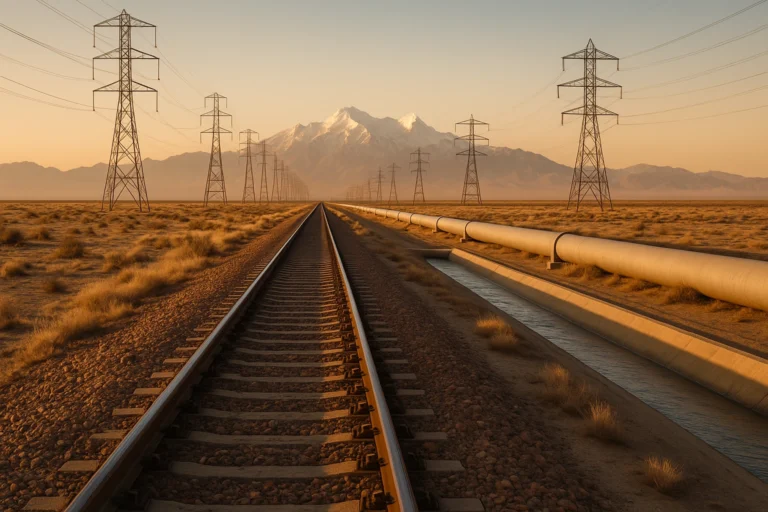
Amid deflationary pressures and geopolitical headwinds, Beijing deploys trillion-yuan stimulus to stabilize growth—but can it balance short-term relief with long-term reform?
A Nation at a Critical Juncture
In 2024/2025, China stands at a pivotal moment in its economic trajectory, grappling with a trifecta of challenges: deflationary pressures, a collapsing property sector, and the looming threat of renewed U.S. trade hostilities under a new Trump administration. In response, Beijing has unveiled an unprecedented 12 trillion yuan ($1.7 trillion) stimulus package, marking its most aggressive intervention since the 2008 financial crisis. This bold move aims to stabilize growth, restore market confidence, and safeguard against external shocks. Yet, the success of this strategy hinges on a precarious balance between short-term relief and long-term structural reforms.
Roots of the Crisis
China’s economic woes are deeply rooted in decades of debt-fueled growth and structural imbalances. Local governments, burdened by 94 trillion yuan ($13 trillion) in liabilities, have long relied on land sales and shadow banking to sustain operations. The property sector, once accounting for 25% of GDP, has imploded, leaving 3.5 billion square meters of unsold housing and crippling developers like Evergrande and Country Garden. Externally, geopolitical tensions with the U.S. have escalated, with Donald Trump’s campaign pledge to impose 20% universal tariffs threatening $550 billion in Chinese exports. Domestically, weak consumer demand persists, reflected in a CPI of 0.2% and youth unemployment stubbornly at 14%.
Dissecting the Policy Framework
Summary of the Strategy
Central to Beijing’s response is a three-pronged approach:
- Debt Resolution: A 12 trillion yuan package to bail out local governments, combining 10 trillion yuan in direct liquidity injections and 2 trillion yuan in debt maturity extensions.
- Monetary Easing: The People’s Bank of China (PBOC) slashed the 7-day reverse repo rate by 20 basis points and introduced a 500 billion yuan Securities-Financial Institution Swap Facility (SFISF) to stabilize equities.
- Targeted Fiscal Stimulus: Allocating 5 trillion yuan for green technology upgrades, 4 trillion yuan for urban管网 (pipe network) modernization, and subsidies to boost rural家电 (appliance) and auto consumption.
These measures aim to counter deflation, hedge against U.S. tariffs, and advance President Xi Jinping’s vision of “new quality productive forces,” emphasizing technological self-reliance and high-end manufacturing.
Plausibility Check: Ambition Versus Reality
While the scale of intervention mirrors China’s historical crisis responses, significant risks loom. The local government bailout, though staggering, risks entrenching moral hazard. Provinces like Guizhou, already dependent on central transfers, face no penalties for fiscal mismanagement, perpetuating a cycle of debt accumulation. Monetary easing, while addressing liquidity, threatens to weaken the yuan further—already down 6% in 2024—and could accelerate capital flight, as evidenced by offshore yuan deposits swelling to $1.2 trillion.
Structurally, urbanization initiatives targeting 280 million rural migrants lack critical hukou (household registration) reforms, limiting access to urban healthcare and education—key drivers of consumer spending. Externally, while Trump’s tariffs align with campaign rhetoric, China’s financial system remains insulated from direct U.S. sanctions due to global interdependencies. However, export-reliant sectors face existential threats.
Economic and Political Implications
Economic Impact
In the short term, infrastructure projects like管网 upgrades in 30 cities and green tech subsidies for EV batteries and semiconductors could lift 2025 GDP growth to 5%, benefiting state-owned enterprises (SOEs) such as Power Construction Corp and CATL. However, SOE-dominated investment sidelines private SMEs, which received only 35% of 2024 corporate loans despite employing 80% of workers. The property sector’s 22% contraction continues to drag on growth, with developers like Vanke struggling despite state-backed acquisitions of unsold homes.
Political Ramifications
Politically, job creation through infrastructure projects aims to quell youth discontent ahead of the 2025 National Party Congress. Failure risks unrest in manufacturing hubs like Guangdong. Preparing for Trump’s tariffs accelerates decoupling efforts, with 5 trillion yuan earmarked for semiconductor self-reliance—a direct counter to U.S. export controls. Yet, pledges to decentralize fiscal power and overhaul hukou face resistance from provincial elites and SOEs, testing Xi’s ability to balance growth with institutional reform.
Sectoral Winners and Losers
Beneficiaries
- Infrastructure & Construction: SOEs like CRRC Corp and Anhui Conch Cement will dominate 4 trillion yuan管网 projects and high-speed rail expansions.
- Green Technology: Firms such as LONGi (solar) and CATL (EV batteries) are poised to capture 70% of equipment subsidies under Xi’s “new quality productive forces” agenda.
- State-Owned Banks: ICBC and Bank of China, bolstered by 300 billion yuan in recapitalization bonds, will intermediate debt swaps while earning fees.
Vulnerable Sectors
- Export Manufacturers: Guangdong-based textile and electronics exporters, including Foxconn, face collapse under potential U.S. tariffs.
- Property Developers: Despite state interventions, firms like Country Garden remain mired in liquidity crises.
- Rural SMEs: Excluded from formal credit channels, 60% report cash flow crises, stifling innovation and growth.
A Delicate Balancing Act
China’s trillion-yuan stimulus underscores a high-stakes gamble: stabilizing growth today while sowing seeds for tomorrow’s reforms. While infrastructure spending and debt relief may avert immediate crisis, long-term success hinges on reducing SOE dominance, empowering households, and navigating U.S. trade hostilities. Globally, China’s reflation could stabilize commodity markets but risks exacerbating trade tensions. Investors must monitor fiscal decentralization and consumption reforms as barometers of sustainable transformation. Ultimately, Beijing’s ability to harmonize short-term fixes with systemic change will determine whether this strategy secures stability—or sows the seeds of future turmoil.
Sources:
- People’s Bank of China (PBOC) Reports: PBOC Monetary Policy Reports (VPN)
- National Bureau of Statistics (NBS): China Statistical Yearbook
- IMF Debt Sustainability Analysis: IMF China Country Report
- U.S. Campaign Policy Drafts: Trump Campaign Policy Agenda



